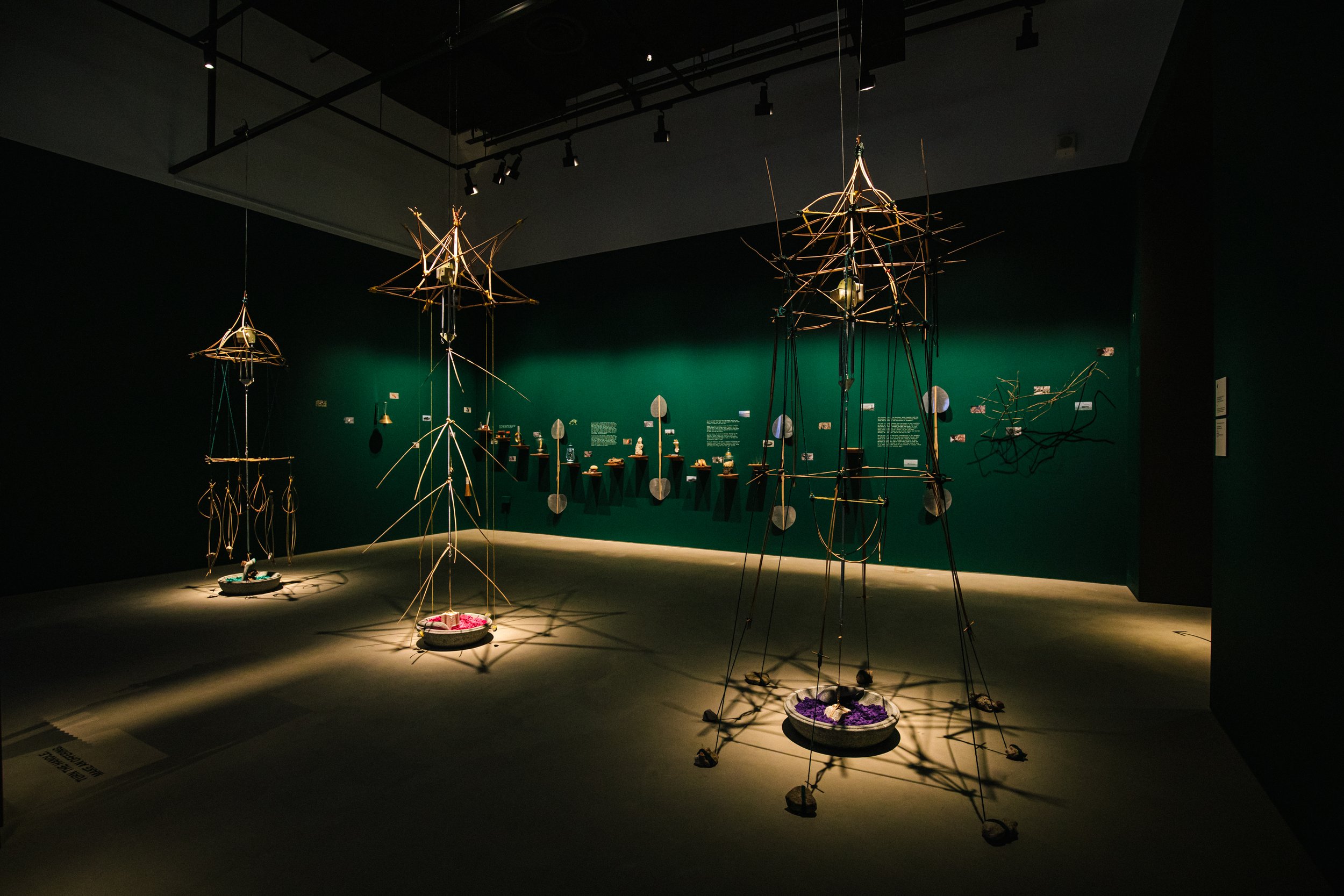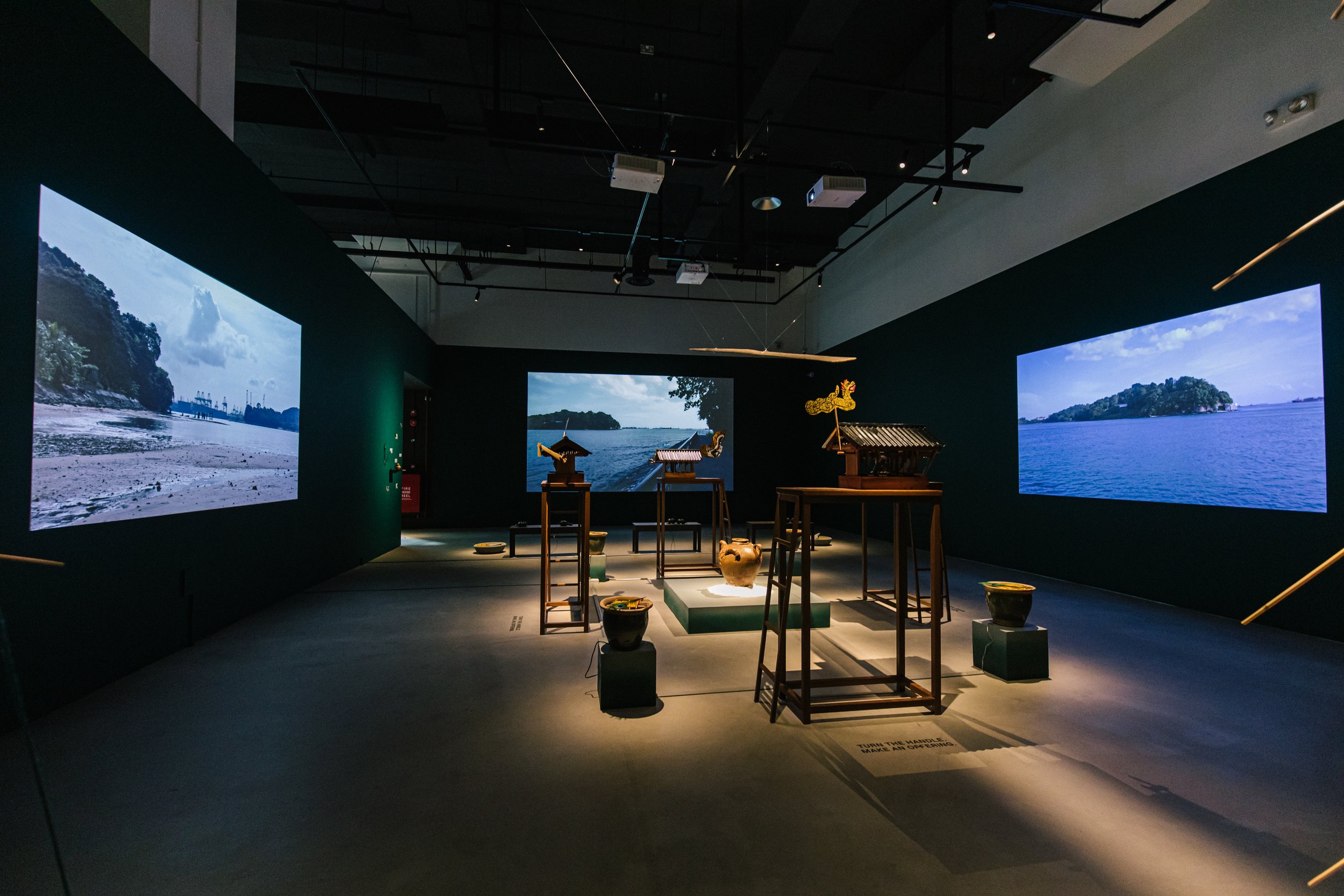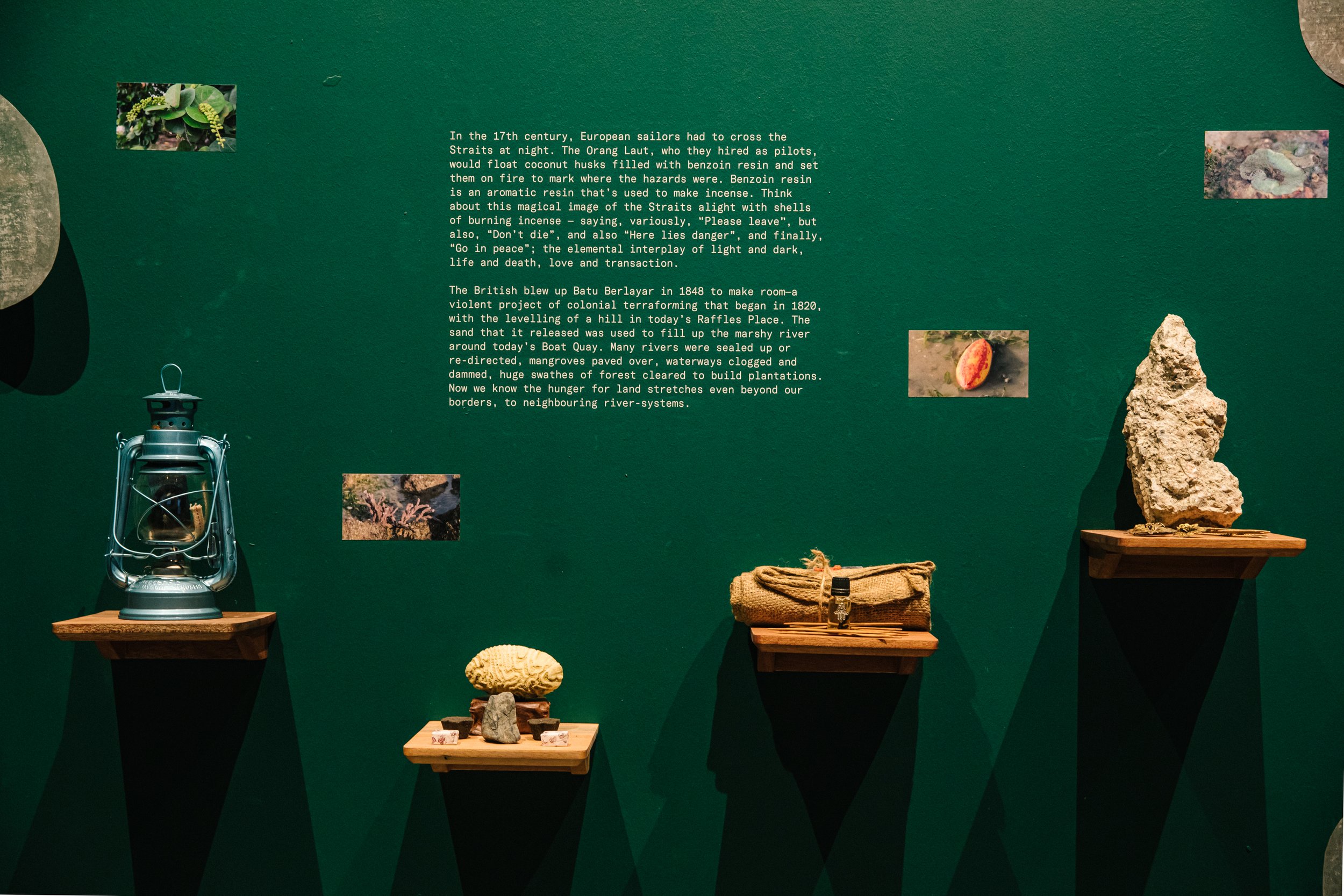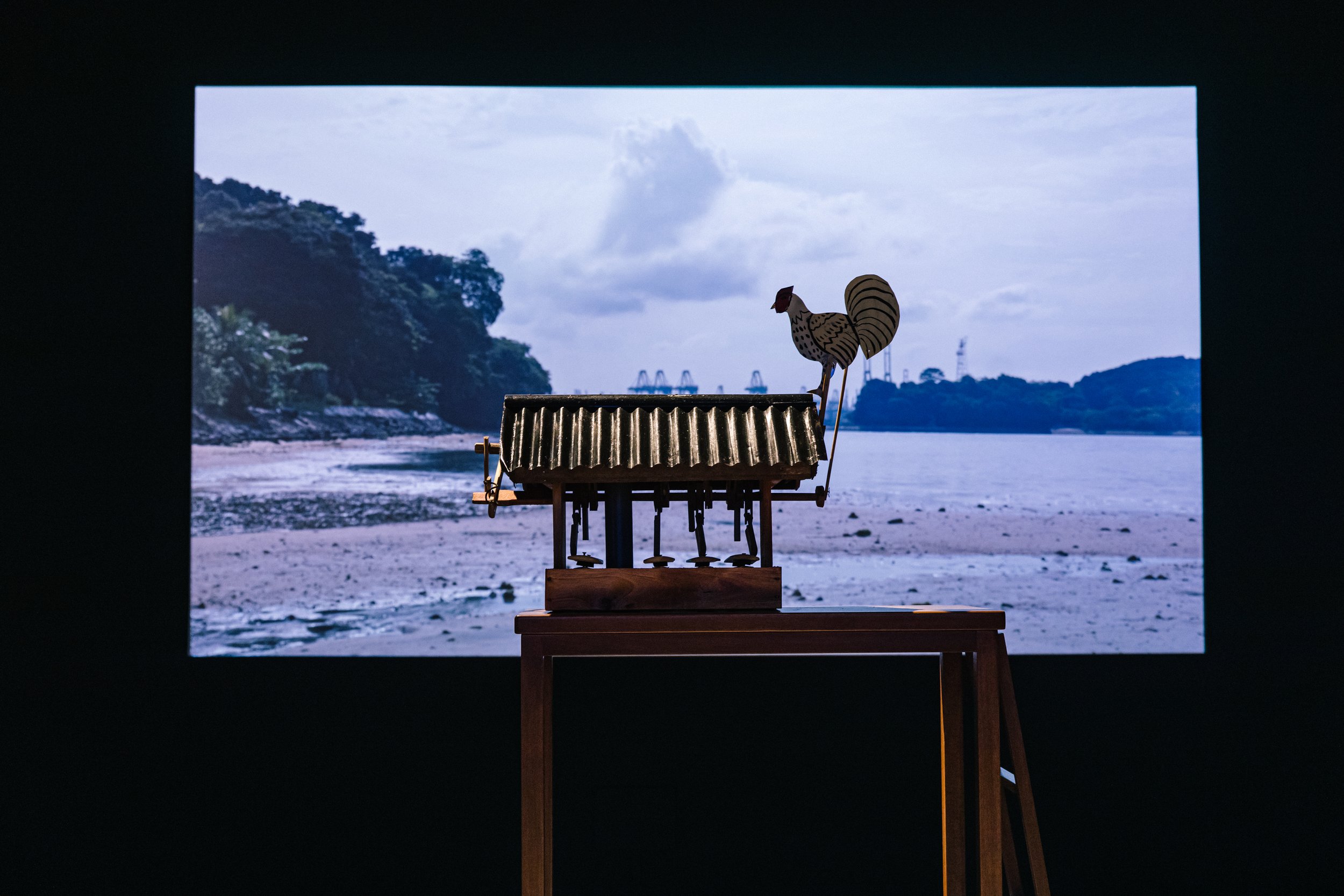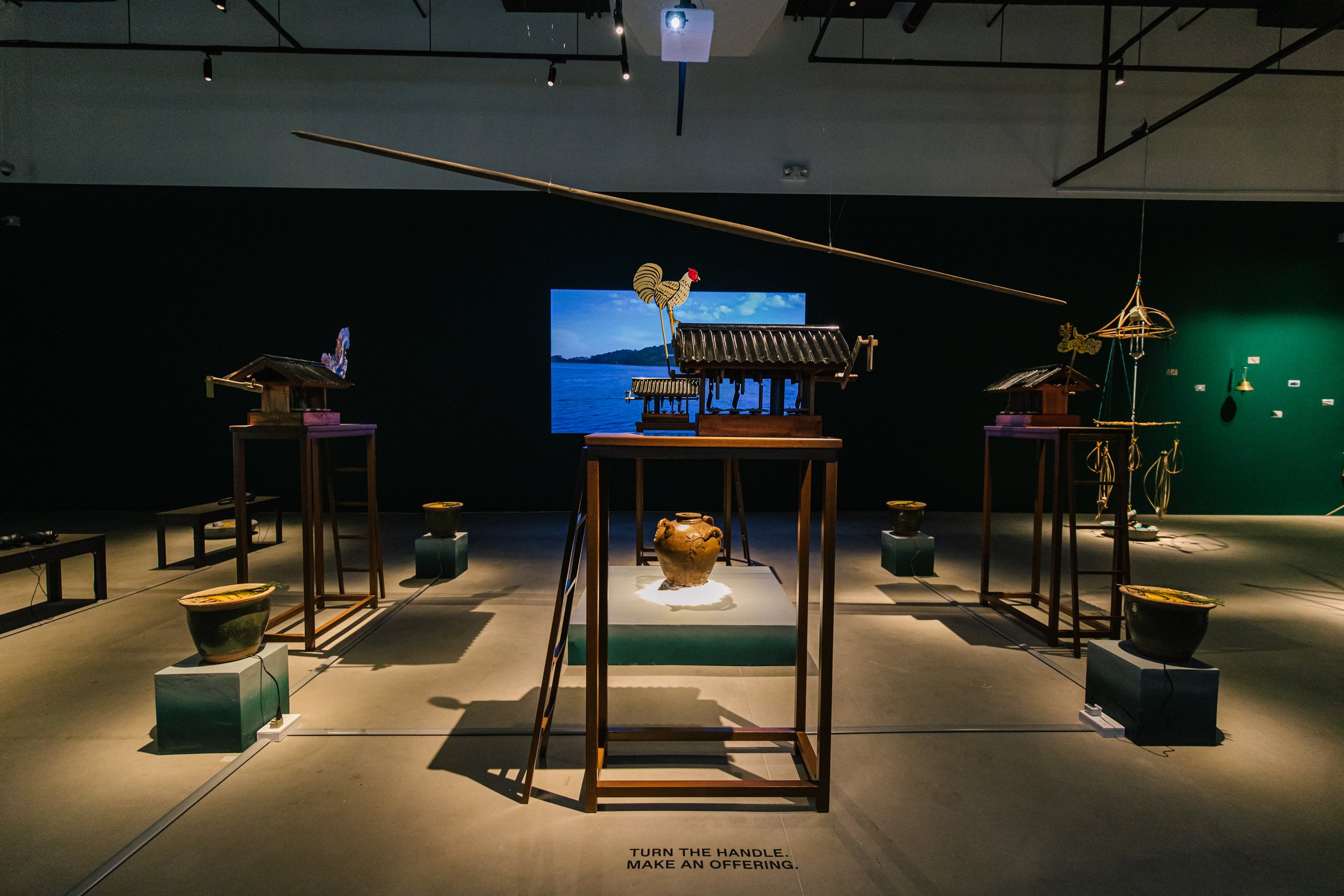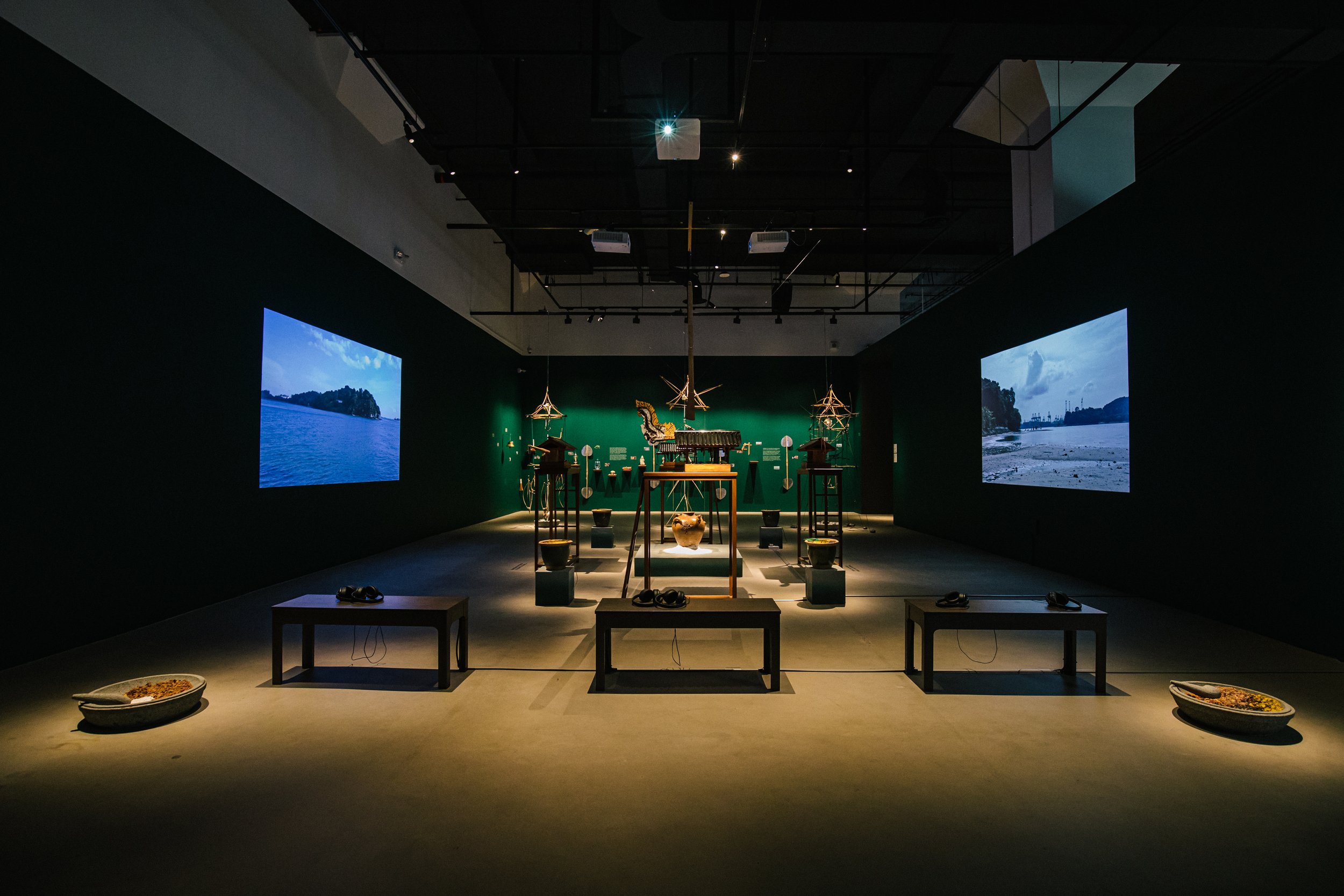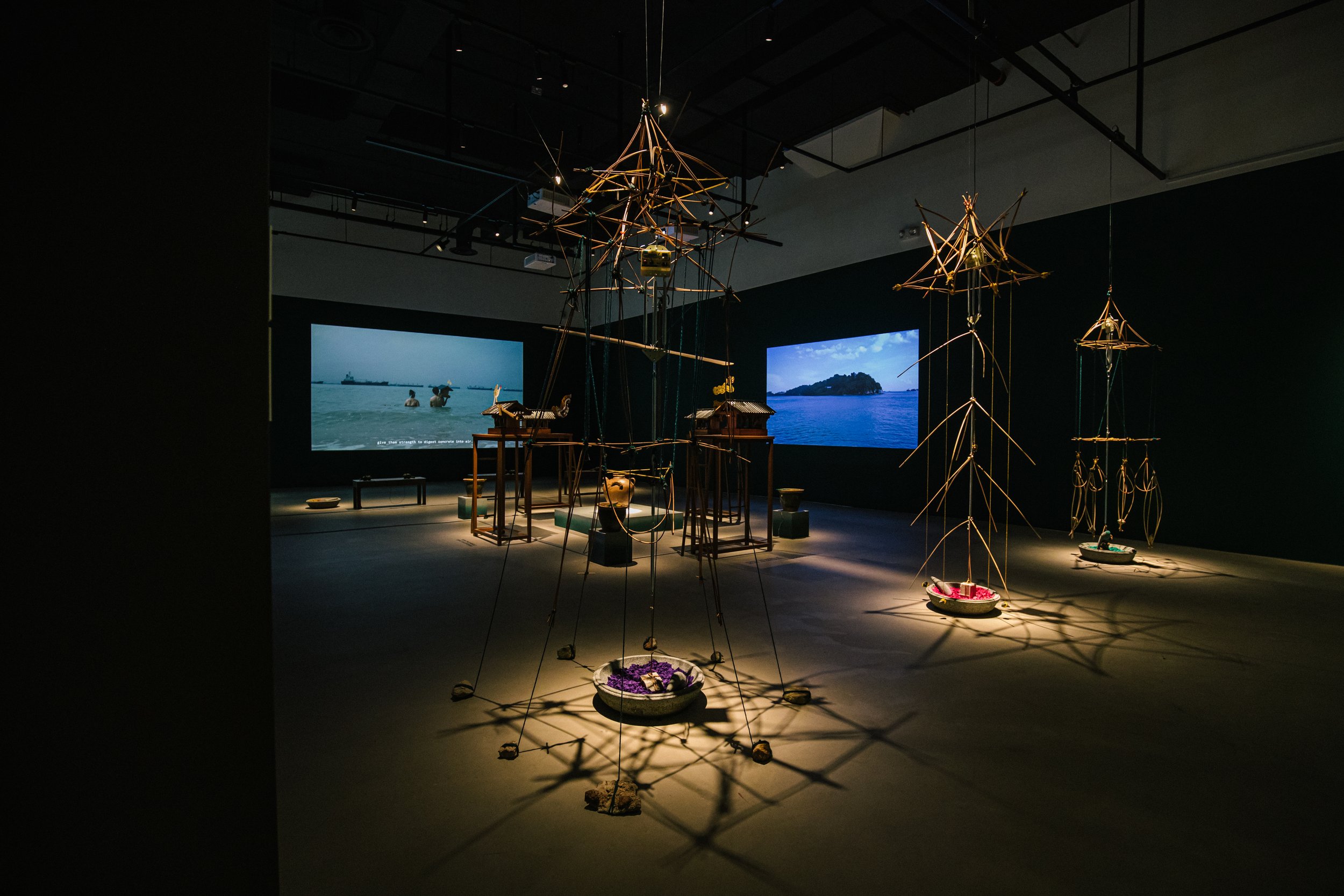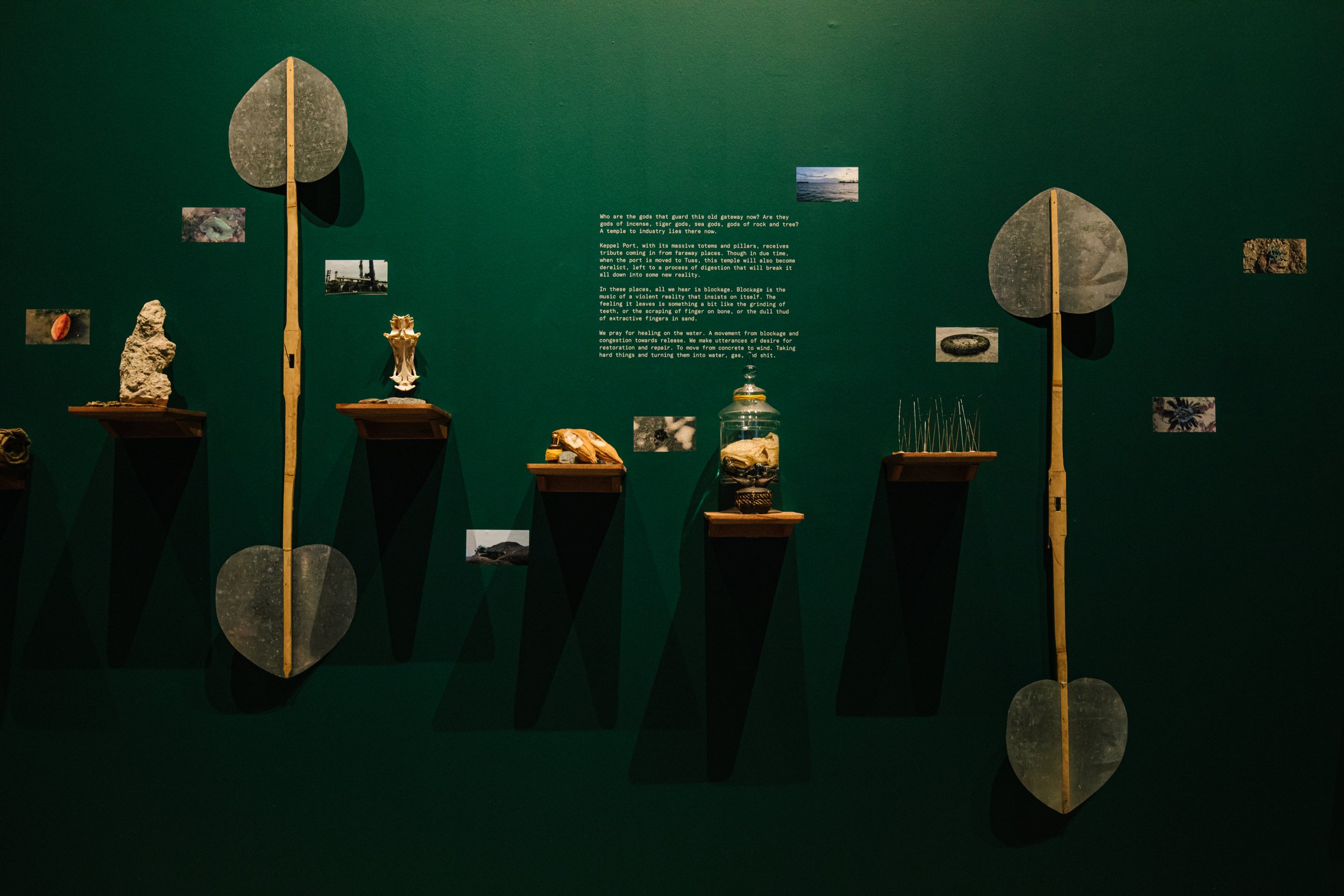INSTALLATION
This installation work at the Singapore Art Museum’s Lonely Vectors came out of a long-form creative conversation between myself and artists Zarina Muhammad and Zachary Chan. We worked in a collective to explore our respective and overlapping curiosities about territoriality, the psycho-spiritual traces of infrastructure on the land and memory, and hidden ways of knowing and navigating space.
The work began as an inquiry into the Southern Coast of Singapore, where the Museum is situated at overlapping points of note: maritime trade, land reclamation, colonial-era infrastructure, and histories of displacement. A walk along the long coast revealed all of these realities to live in a tense, unresolved co-existence, with some— superlative architecture, development, and modern state storytelling— jostling for more space than others. We felt our bodies clench and retreat.
We reached the southern tip— where Batu Belayar once overlooked a cliff before it was destroyed by the British. From here, we got a view of Tanjong Rimau on Sentosa Island, across a small waterway. Here was a complex nexus of realities: a wealthy expat enclave rendering the landscape and locals into living “dioramas”, an ancient and storied waterway that has been the primary entrance to the island since time immemorial, clenched and traumatized 21st century bodies finding release in wind and water.
We wanted to re-create this multiple sense of reality, and capture a sense of release. We began to fixate on a work that could enact, variously, a ritual, a metaphor, and a spell of transmuting hard, sharp, brutal qualities into air, water, and spirit.
What emerged was a multi-modal, multi-media installation that combines kinetic sculptures, wind instruments that are also spirit houses, an assemblage archival material, a jar of live fermenting rice wine, an ancient scavenged oar, a video essay, and a twin cinema of the waterway between Batu Belayar and Tanjong Rimau. The work is at once a subversion of the colonial “diorama” form, and a release from it: viewers are encouraged to participate in the work, offering a prayer to the space, and also letting it work on them— a site of calm, meditation, and prayer, amidst shards of broken history, broken land, and broken bodies.



